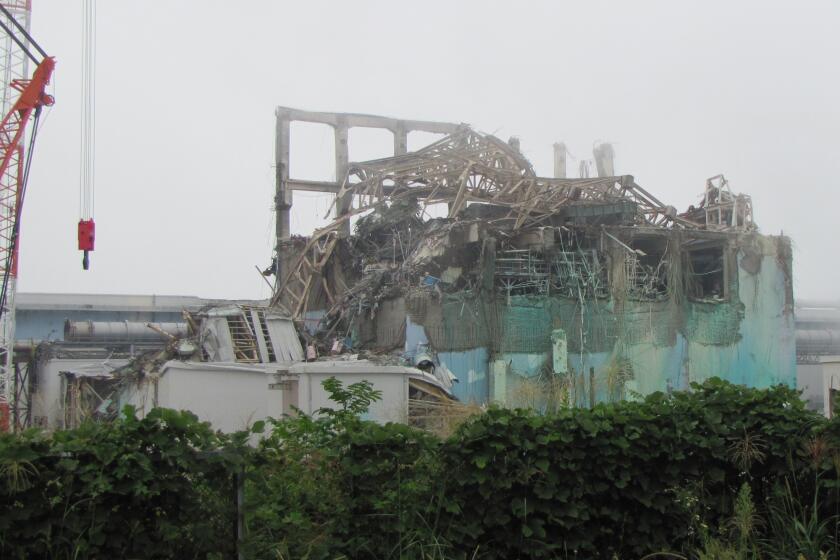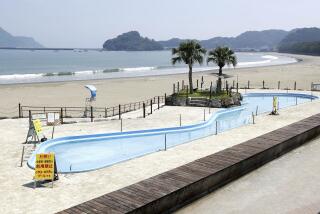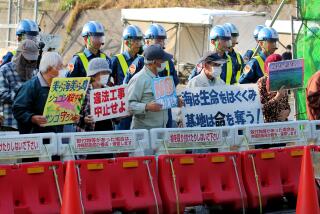Japan marks centennial of devastating Great Kanto Quake with nationwide disaster drills

- Share via
TOKYO — Prime Minister Fumio Kishida took part in a televised disaster drill Friday based on a hypothetical earthquake in the Tokyo region as Japan marked the centennial of the real-life 1923 Great Kanto Quake that killed more than 100,000 people.
The magnitude 7.9 earthquake that struck the Sagamihara area southwest of Tokyo on Sept. 1, 1923, just before noon triggered an inferno in the region, causing most of the victims to perish in the fire. The blaze destroyed nearly 300,000 Japanese paper-and-wood homes, dealing the country a major social and economic blow just as it was seeking to modernize.
In the aftermath, thousands of ethnic Koreans were killed as police and others responded to baseless rumors that Koreans were poisoning wells. The rampage has never fully been acknowledged by the government.
Japanese officials are worried that another devastating temblor could hit again. On Friday, the drill simulated the aftermath of a 7 a.m. magnitude 7.3 quake in central Tokyo. Kishida and his Cabinet ministers, wearing matching light-blue uniforms, walked to the prime minister’s office for an emergency response meeting to discuss initial measures with the city of Sagamihara, the epicenter of the 1923 quake and hard hit again in the hypothetical disaster scenario.
Japan, which sits on the so-called Pacific “ring of fire,” is one of the most quake-prone countries in the world. A magnitude 9.0 quake on March, 11, 2011, off Japan’s northeastern coast, triggered a massive tsunami, killed more than 18,000 and triggered the Fukushima nuclear disaster.
On Friday, earthquake drills were conducted at municipalities and schools around the country. At elementary schools, children squatted under desks to protect their heads from falling objects.
Japan says treated and diluted radioactive wastewater from the Fukushima nuclear power plant will be released into the ocean as early as Thursday.
Kishida was to participate in a joint earthquake drill hosted by Sagamihara and joined by eight cities, including Tokyo.
The Great Kanto Quake came 13 years after Japan’s colonial rule of the Korean Peninsula began in 1910. Many Koreans, Chinese and Japanese mistaken as Korean, as well as Japanese communists, labor activists and anarchists, were killed by police and paramilitary forces. There is no official number, but historians say as many as 6,000 of them were slain.
At a memorial service held by Korean residents and human rights groups at a monument dedicated to the massacre victims, attendants observed a moment of silence at the sound of a bell at 11:58 a.m., the time the 1923 quake struck. Past Tokyo governors used to send a message of condolence to the ceremony, but the tradition ended in 2017, a year after Gov. Yuriko Koike took office.
Koike, who attended a drill elsewhere in Tokyo, did not show up at an official annual memorial for quake victims at a hall in the hard-hit Sumida region in downtown Tokyo. She offered condolences to all victims of the quake in a message read by her aide.
More to Read
Sign up for Essential California
The most important California stories and recommendations in your inbox every morning.
You may occasionally receive promotional content from the Los Angeles Times.











